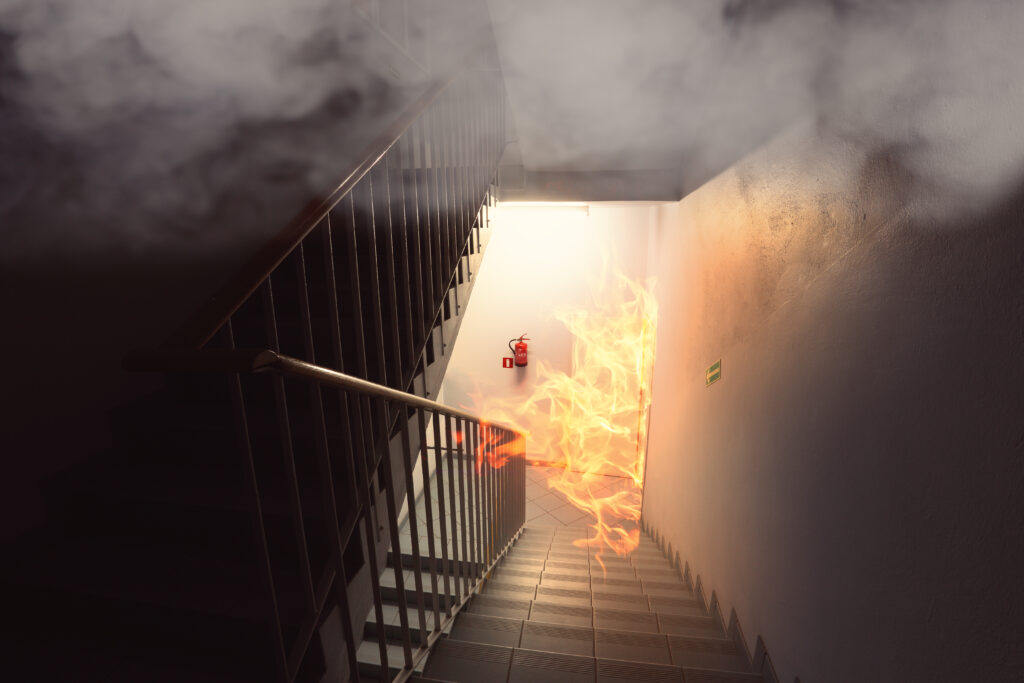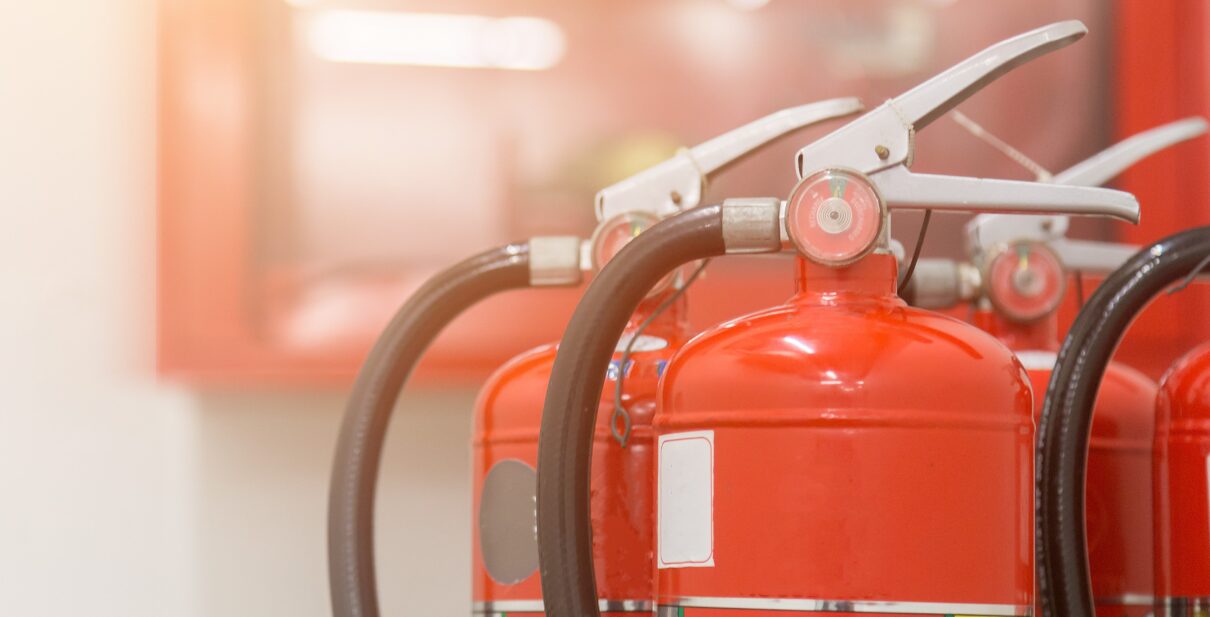Fire protection is a critical aspect of facilities management, especially in environments like accommodations and managed buildings, where safety and compliance are paramount. At Global Facilities, we take fire safety seriously, offering a range of solutions, including fire door surveys and facilities management services, to ensure that buildings are both safe and compliant. Our approach encompasses both passive and active fire protection strategies, recognising that each plays a vital role in minimising fire risks. Understanding the distinction between passive vs active measures is essential for any facility or building manager looking to implement a robust fire safety plan.
What is Passive Fire Protection?

Passive Fire Protection (PFP) focuses on containing fires or slowing their spread through the use of fire-resistant construction materials and building design features. These systems are generally built into the structure of a building, meaning they don’t require human intervention or the triggering of a system to function in the event of a fire.
Some key elements of passive fire protection include:
- Fire Doors: Designed to prevent the spread of flames and smoke, fire doors are critical in controlling fire within a building and ensuring safe evacuation routes. Regular fire door surveys are essential to ensure compliance and effectiveness.
- Fire-resistant walls, floors, and ceilings: These are designed to compartmentalise a building into smaller sections, preventing a fire from spreading quickly throughout the facility.
- Fireproof coatings and treatments: Structural elements like steel beams can be treated with fireproofing materials that protect them from extreme heat.
- Smoke seals: Installed around doors and other entry points, these seals prevent smoke from spreading to other areas, allowing more time for evacuation.
In essence, passive fire protection provides time—time for people to evacuate safely and time for firefighters to arrive before the fire spreads uncontrollably.
What is Active Fire Protection?

On the other hand, Active Fire Protection (AFP) involves systems that require action to work, either manually or automatically. These systems are typically activated when a fire is detected and are designed to suppress or extinguish it. Key elements of active fire protection include:
- Fire alarms and detection systems: These systems alert building occupants to a fire, allowing for swift evacuation and emergency response.
- Sprinkler systems: Automatic fire sprinklers detect and release water when the temperature reaches a certain threshold, helping to contain or extinguish the fire.
- Fire extinguishers: Manual tools like fire extinguishers require trained personnel to operate them, but they can be crucial in preventing a small fire from becoming a major one.
- Smoke control systems: These can include smoke vents or extraction systems that help manage the movement of smoke through a building, improving visibility and air quality during evacuation.
Which is more important?
Both passive and active fire protection systems play a crucial role in a comprehensive fire safety strategy. Neither is inherently more important than the other; rather, they complement each other.
- Passive fire protection is the backbone of a building’s fire safety infrastructure, ensuring that the building’s structure resists fire and smoke for as long as possible.
- Active fire protection provides the immediate response needed to alert people, contain the fire, and prevent it from spreading.
In facilities management, it’s essential to ensure that both systems are up to date, regularly inspected, and maintained in compliance with the latest safety regulations.
The Importance of Regular Inspections and Maintenance

Ensuring the integrity of both passive and active fire protection systems is not a one-off task. At Global Facilities, we understand the importance of ongoing compliance, which is why we offer fire door surveys and a comprehensive range of fire safety management services. Regular inspections, maintenance, and upgrades of these systems are vital to ensure that your building remains safe and compliant with fire safety regulations.
Conclusion
Whether you’re managing student accommodation, commercial buildings, or any other facilities, a well-rounded fire protection strategy includes both passive and active fire safety measures. We provide the expertise and support to ensure your facilities are as safe as possible, from fire door surveys and remedial works to full fire protection system management.
Contact us today to learn more about how we can help you safeguard your buildings and ensure compliance with fire safety standards.





